|
Dean & Son Publishers - A Short History:
As published by vintagepopupbooks.com in the May 2013 edition of the Movable Book Society Newsletter, "Movable Stationary" (Edited in Feb. 2024 as more information has been discovered) "Copyright © Vintagepopupbooks.com. All rights reserved.
This content may be cited with proper attribution to Vintagepopupbooks.com and a link back to the source." Author's Note: This composition serves as an informational piece rather than a scholarly research document. Despite this, considerable effort has been dedicated to ensuring the content's accuracy and engagement. The material draws upon a wide spectrum of resources, with explicit citations included for direct quotations only. Should you require specific source details for any content, please reach out to us at [email protected] 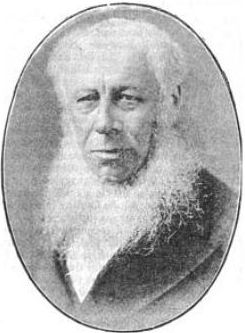 George Alfred Henry Dean (July 1, 1822 – May 13, 1891)Dean & Son claimed to be the “originator of movable books for children.” While this may be arguable, they were certainly the first to produce movable books in large quantities.
Most of the wonderful nineteenth-century Dean & Son movable books that are such a delight to collect were produced under the watch of George Alfred Henry Dean (pictured above). I have documented the history of Dean & Son chronologically, starting with George Dean’s maternal Great Great Grandfather, Thomas Bailey ….. Thomas Bailey 1 was recorded in the Stationers’ Company registers as a “Yeoman of the parish of St John, Wapping.” Old references that we’ve found refer to the company of Dean & Son as having been family owned since 1702. The family’s jump into the printing/publishing business likely started with Thomas Bailey 1 who died in 1746. His son, also named Thomas, set up his printing company at “Billiter Lane, Leadenhall Street” in 1741. He traded under the sign of the “Ship and Crown.” Most of the publications Thomas Bailey II put out were reprints and romantic chapbooks, some considered to be a bit salacious. One title we found of Bailey’s from the 1750s was “Love and Innocence Betrayed, a Secret History, life, and Surprising Adventures, of Miss D .” At this point, the Bailey publishing business was decidedly “low rung” and probably not highly profitable. Distribution was carried out primarily by “street hawkers” – a far cry from the international publishing dynasty that this family would eventually create. It’s likely that they made more money from their other services which included not only printing for others, but selling medicines to cure such ails as leprosy, scurvy, and hemorrhoids. At one point they even called themselves “Bailey’s Printing Office and Medicinal Warehouse.” Thomas Bailey II and his wife Elizabeth “Betty”, had 2 sons (William & Thomas) and 2 daughters (Elizabeth & Jane). The oldest son, William was born in 1743.Thomas Bailey II died in 1764 and left everything, including his company, to his wife Betty. Betty took over the company and we can find her imprint “Mrs. Bailey’s Printing Office, the Ship and Crown” on several books of that era. The family business was located at 110 Leadenhall Street. There was dissension within the Bailey family. Thomas Bailey’s will makes mention of son Thomas and daughter Jane, but nothing of William or the other sister. It appears that they were “disinherited.” William started his own printing company around 1767. Brother Thomas separately carried on the original family business with much less success than big brother William. Thomas Bailey III sold the family business to William (George Dean’s Grandfather) before his death in 1791. William Bailey’s sign for his printing company read A a B, interpreted by the curious as “BIG A, LITTLE a, BOUNCING B”. Baileys printing offices were located at 41, Leadenhall Street from 1770-1785 and then at 42 Bishopsgate Street from 1785 -1790. Many of his publications in the 1700s were without his name, and have imprints "printed and sold at the a," or, "at the little a, 41 Leadenhall Street." They were listed as doing letter-press, copper-plate, and music-printing. At the time it was trendy to list your services using rhyming verse. The British Library gives us this advertising verse from William’s shop, ‘Your Shop-Bills also at any time, You may have put into jingling Rhime’. Bailey also published a children’s ABC book which some sources call the first Toy Book ever published in EnglandWilliam Bailey married Susanna “Susan” Nee Hawes in 1767. William and Susan had two sons, John and Thomas, and two daughters, Mary Ann, and Anna Maria Bailey. In 1790 they moved to 50 Bishopsgate. After her husband’s death in 1794, Susan successfully took over running the company - under her own imprint. We find mostly romantic chapbooks with her imprint such as "The Captivated Philosopher", "The Power of Love over Reason," and "The Miller's Beautiful Daughter"  Susan’s son John Bailey went on to start his own company on Chancery Lane in 1799. Susan relocated to 35 Threadneedle Street in 1808. After her death in 1810, Susan Bailey willed the company solely to her two daughters. For whatever reason, Susan left her sons only a pittance. In her will “The whole of my business and…everything thereunto belonging” was left to her daughters. By that time, both girls had married apprentices from their parent’s shop, Mr. Thomas Dean (Sr.) and Mr. William Munday. Nevertheless, Susan’s will stipulated adamantly, that the business was “for their own sole use and benefit absolutely not to be subject of control of any present or future husband…my two daughters will share equally any profits arising from the printing business…for their own solo use and benefit absolutely independent of any present or future husbands…” Indeed, records show that the company Dean & Munday had both sisters, Mary Ann Dean and Anna Maria Munday listed as its principals between 1812 and 1840. Perhaps it was because of all the babies the sisters bore, or the customs of the early nineteenth century, that regardless of Mother Susan’s attempts to ensure the female succession of the business, it would become identified primarily with the husbands. The apprentice husbands, along with their wives, took over the company naming it Dean & Munday in 1811. Mother Susan had already located at 35 Threadneedle Street in 1808. Mary Ann and her husband Thomas Dean had several children, the oldest boy named Thomas W. Dean (Jr.) (1796 - 1856). Anna Marie and her husband, William Munday also had several children, the oldest son was Thomas H. Munday, (1812 - 1849). Closely bound by business and family, the Deans and Mundays raised, with the help of nannies, their large brood of children right behind their shop on Threadneedle Street. Once they entered their teens, Thomas Dean and Thomas Munday - cousins and oldest sons of Mary Ann and Anna Marie - became apprentices and then partners in Dean & Munday. The firm Dean & Munday published the company’s first novelty books, The Dame Wonder Transformation Book series. These were small (7.2" X 4.4" soft cover books with a hole on each page. The face on the last page is therefore shown through each hole. A fine example can be seen here: https://specialcollections.blogs.brynmawr.edu/2020/03/31/transformations-of-images-and-texts-the-orphan-girl/(Interesting Note: American publisher Edward Dunigan appears to have copied this Dean & Munday series but used new illustrations 'strongly inspired by' the illustrations in the Dean books. They also adapted the text as necessary to make them work for American readers. It is believed that later, the earliest versions on two sides of the paper and without holes were done by Dunigan, with the change in series title from 'DW's Transformations' to 'DW's Picture Books', and when McLoughlin took over Dunigan, it was these non-novelty books that they continued to issue under the Mcloughlin imprint. We don't believe that Mcloughlin ever issued them with holes.)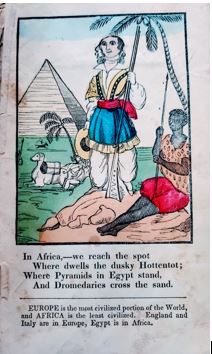 from the collection of vintagepopupbooks.com from the collection of vintagepopupbooks.com
We don’t know why, but records show that Thomas Dean Jr. and Thomas Munday dissolved their partnership in 1838. Thomas Dean Jr. went on to become very successful but had the reputation of being a dangerous man with “the devil” in him – perhaps that’s why things didn’t work out with his cousin Thomas Munday.Thomas Dean Jr. officially took over the firm Dean & Munday in 1843 and re-named it Thomas Dean & Co. Then in 1847 he again re-named it, this time to Thomas Dean & Son (while his publisher's imprints stated Thomas Dean & Son, the cover of his books at the time often stated simply “Dean & Son.” In 1845 the company left Threadneedle Street and moved westward to 11 Ludgate Hill.
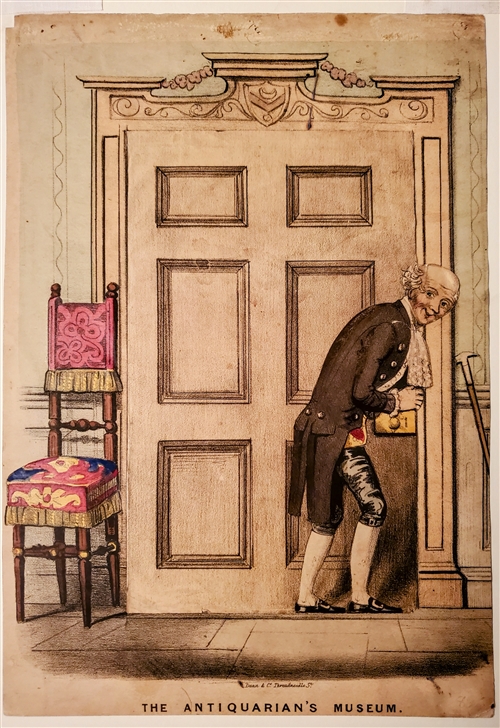 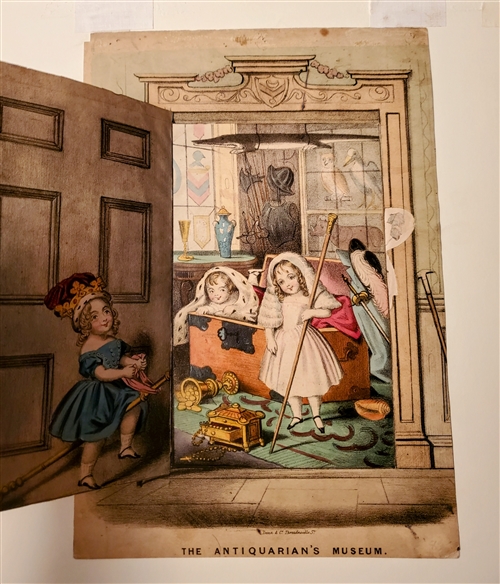
Thomas Dean Jr. was very advanced for his time. He made many improvements to the art of lithography during its early days. At that time the lithography stones were cleaned every night and drawn on again the following morning. They started out printing on stone and later used wood engravings – all colored by hand. Thomas Dean Jr. was the father of George Alfred Henry Dean, born in 1822 as the third of 5 children and the oldest son. George Dean entered his Father’s publishing business, Dean & Munday, in 1839 at the age of 18. Thomas Dean Jr. died quite suddenly at age 60 on May 13, 1856 (on the same day that his son George died 35 years later). After his Father’s death, George Alfred Henry Dean (pictured at the top of this article) changed the company name from “Thomas Dean & Son” to simply “Dean & Son.” George claimed that his company was the originator of children’s movable books. They were certainly the most prolific during the last half of the nineteenth century. Dean had a special department of skilled craftsmen to assemble just these books. Besides publishing, he also had his own coloring and printing abilities as evidenced by publishers' ads and notes on illustrations such as “Lith. & Produced Dean & Son. London.” They also advertised themselves, as early as 1865 as “Lithographers and printers to the trade as well as publishers of children’s books of worldwide reputation.”While other publishers such as Darton and Ward & Lock put out some movable toy books, Dean was by far the most prolific. His near toy book monopoly would not be seriously challenged until Raphael Tuck came along in 1870. Dean also published the first magazine that was printed in chromolithography, “The Little One’s Own Coloured Picture Paper”, which was a collection of children's stories, poetry, and other miscellaneous writings for children. George Dean moved his company to 160A Fleet Street in 1871 because the building on Ludgate Hill had to be raised to widen the road. A prestigious address at the time, it was located in Gough Square just behind the Daily Express building. (By the 1920s however 160A Fleet Street would become a decrepit building destined for the wreaking ball.) 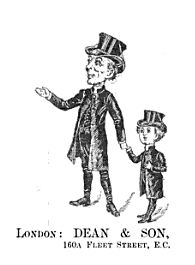 Unlike his father, George Dean had many friends both in and out of the trade and was well-loved by family, friends, and employees alike. He was often referred to as “a friend of children.” Judging from his photo he does look a bit like Santa Claus... On the occasion of his 70th birthday, Dean’s staff presented him with a pair of framed etchings by the prolific Victorian landscape artist, Benjamin Williams Leader. Not all of his employees were so wonderful, however. In 1866 records show an incident where his Foreman on the print-coloring line stole the wages that he had been entrusted with to pay the coloring people. During George Dean’s tenure, the company made great strides, progressing from stencil and hand coloring to lithography and color blocking. They did a lot of work, such as coloring, for other London publishers. Dean & Son also supplied the trade with all types of printing supplies and equipment. They were closely tied with The India Company and kept a warehouse to sell imported foreign luxury goods. They were big in the bible business.
Vintagepopupbooks.com has a large collection of movable books by Dean & Son, those for sale are available here: https://www.vintagepopupbooks.com/searchresults.asp?Search=dean&Submit=
George Dean was afflicted with a condition called Angina Pectoris but kept his sharp mind. After several years of failing health, George Dean died at Southsea on May 13, 1891. He is buried at Ladywell & Brockley Cemetery in London next to his wife, Emily “Emma” Dean, who died in 1902. After George Dean’s passing his two sons, George and Henry, took over the company. On February 24, 1892, they became a limited liability company and changed the name to “Dean & Son, Limited.” The International Bookseller, volume 1, 1892 states: “In consequence of the recent death of the head of the Dean & Son firm, the members of his family, to whom his share of the business was left, have thought it best to form the whole into a limited company, under the style of Dean and Son limited. The late partners assume the position of directors, whilst the capital remains the same.”The young Dean brothers did very well after George Dean’s death. They went on to secure many gold medals at various exhibitions such as The Paper, Printing, Stationery, Publishing, and Fancy Goods International Exhibition and Market as well as The Exhibition at the Royal Aquarium 1892 where they exhibited their movable toy books in various stages of production. Note: A couple of old newspaper archive editorials about these exhibitions complain that gold medals “could be had for a certain amount of hard cash.”At the height of its popularity during a time of great prosperity in the Western world, The Deans employed hundreds of workers, including those hired for its spin-off company, Dean's Rag Book Company Ltd, founded in 1903. The rag book company was formed after Henry Dean invented a way to make books practically indestructible. He filed a patent for “books with cloth leaves” on Dec 18, 1903. The first rag book was entitled The Life of a Bold AB on his Ship in the Rolling C. This spin-off company shared the same premises as “Dean & Son” until 1911 when it moved to its own factory. They later went on to manufacture toys and is now primarily known as Britain's oldest Teddy Bear manufacturer. Dean’s Rag Book Company has its own history as well as its own legion of fans and collectors. We recommend the book The Dean's Rag Book Co. LTD - The First 100 Years by Neil Miller if you are interested in the history of this spin-off rag book, toys, and teddy bear company. Dean & Son LTD controlled Dean's Rag Book Company until 1952 when the two companies parted ways.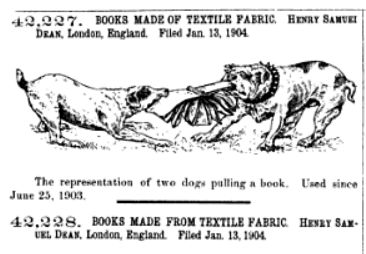
The elder brother, George G. F. P. Dean died in 1909 at the age of 55. He died quite suddenly after contracting “blood poisoning from some unwholesome fish” while on holiday in Switzerland. Henry Dean was left to run the company joined by his younger brother A. W. Dean alongside other directors including Francis G. Green, Edward Hamilton, Walter Scholes, and perhaps an E. Powers.1921 - The Dean Family Dynasty ends ……………..Records show that Henry Samuel Dean and by now a 3rd brother, the youngest Dean brother, A. W. Dean, both retired from the board in 1921. In September of 1921, the brothers and Dean & Son Limited was bought out by Odham’s Press for the sum of £ 456,316. Odham’s continued the Dean & Son imprint and moved its company to a fine building that they remodeled for their purposes at 29 King Street Covent Garden. In 1933 the company moved to No. 6, La Belle Sauvage, Ludgate Hill London. It is interesting to note that in the 1921 newspaper announcement for the buy-out of Dean & Son, managing director of Odham’s Press, J. S. Elias, stated that Dean & Son had been family owned since 1702, in the days of Queen Anne. He went on to say that he would continue to run the business under its present style and traditions but that big developments could be anticipated.
Modern-day Dean & Son imprint:Below, we try to summarize Dean & Son's complicated journey through various publishing companies and buy-outs. Dean & Son Limited and the Dean & Son imprint continue to this day. Under Odham’s and the imprint Dean & Son LTD, Dean & Son went on to produce several 1930s pop-up books with Walt Disney such as Mickey Mouse Presents his Silly Symphonies and Mickey Mouse in King Arthur's Court. (Note: the Dean versions say scenic illustrations rather than pop-up). In 1939 Dean & Son moved again, this time to 41-43, Ludgate Hill London where they would stay until the late 70’s. The 1950s brought us more Dean & Son pop-up/movables such as Mickey’s Treasure Trove, and Visit to the Zoo. Odham’s Press was sold to Fleetway/Mirror Co. in 1961. In 1963 International Publishing Corporation - "IPC” was formed, bringing together rival publishing companies including Fleetway/Odham’s and The Hamlyn Group. While each company continued to operate semi-autonomously, Dean & Son went under the Hamlyn umbrella. Dean & Son, however, remained at Ludgate. Although within the Hamlyn Group, they did not move to Hamlyn’s headquarters in Feltham because of the specialist nature of their business. IPC continued to publish books under the Dean & Son imprint such as Bobby Bear’s Pop-up Book. The Dean & Son imprint continued in the 70’s with books such as Dean's Big Top Circus Pop-Up Book. IPC had bought Hamlyn in 1963 for £ 2,250,000. The Reed Group acquired IPC in 1970 to form the giant global corporation, Reed International. The Dean imprint remained under Hamlyn Group which was now under Reed International. In 1983, under Reed, Hamlyn combined its own brand publishing division with that of Dean & Son to form Dean's International Publishing. They were called Dean’s International Publishing from 1983- 1986. Hamlyn bought his company back in 1986. In 1986 Deans International Publishing gave its address as 52-54 Southwark St. London - A Division of The Hamlyn Publishing Group Limited London • New York • Sydney • Toronto. Reed Publishing International again acquired Hamlyn’s company in 1987. Today Dean & Son is a private company listing Egmont Holding Ltd as its sole shareholder. Egmont acquired Reed Publishing's Children's Books division and along with it, the Dean & Son imprint, in 1998. Egmont is the UK's largest children's book publisher. The parent company, Egmont Group out of Denmark, is a world-leading media organization in more than 30 countries. It is owned by a charitable foundation. Dean & Son Limited’s current trading address, still owned by Egmont, is listed as 1 Nicholas Road London.More Interesting Notes:The early Dean’s company was best known for its movable and toy books. Dean and Son published over 200 books with movable/pop-up elements before 1900. (We will soon be posting a list of all that we have found so far (over 200) on our website - vintagepopupbooks.com.) They were the leading producer of movable books at the time. Identifying the publishing editions and dates is difficult. Knowing the dates that Dean was at various addresses is useful for determining the date “window” that books were published in. Often the address was printed but no date. Using the code on the back of each book can be a helpful way of identifying Dean’s print run and print date. This method is not foolproof however because it’s not really a code for dating the book and print run. It’s actually a code for the date and print run of the advert sheet which was used on the back cover of various books. For example, the code might indicate a print run of 15,000 - but that technically means 15,000 advert sheets, not copies of the book. The books and the advert sheets are two different things, so while the code can be very useful for estimating, it can’t be used to definitively determine print run and publication date.Location dates:1770 - 1785 41 Leadenhall Street1785 – 1790 42 Bishopsgate1790 – 1807 50 Bishopsgate1808 – 1844 35 Threadneedle StreetDean & Son had multiple addresses on Ludgate Hill during the 19th century to support their expanding publishing operations. They moved to 11 Ludgate Hill in 1845, and by 1854 they had expanded to include 31 Ludgate Hill. Further growth led them to acquire 65 Ludgate Hill, which they occupied from 1865 until their move to Fleet Street in 1871.
1845 – 1871 - Ludgate Hill1871 – 1921 160A Fleet Street1921 – 1932 29 King Street Covent Garden1933 – 1938 No. 6, La Belle Sauvage, Ludgate Hill1939 – 1977 41-43, Ludgate Hill LondonAfter Ludgate the registered address for Dean & Son changed often. Here are some of the most recent addresses: 1992 - 1998 81 Fulham Road London, 1998 - 2000 Wilmslow Road Handforth Cheshire, 2000- 2012 239 Kensington High Street London, 2012 – 2020 (as of this update April 2020) - 1 Nicholas Road London.
An International Dynasty…… The Dean’s were quite the exporters and they often used commission agents. Dean & Son had movable books in several languages and versions. As an example, the famous French publisher, Capendu released a French edition of Dean & Son’s The Royal Punch & Judy entitled Théatre Enfantin. Le Ménage de Polichinelle. Mélimélodrame En Un Acte . Paris: A. Capendu, [1880].)We also know that at least in the 1860s, Dean Used French publishers to supply the English trade as they felt the French ones were far superior to the English in "taste, quality, and cheapness". See the 1861 announcement below:

According to Literary News 1880 – “Dean & Son, the famous London publishers of toy books for children, have made an arrangement with E. P. Dutton & Co., of New York, giving them the exclusive agency for America for their publications.” We’re not sure what happened to the relationship with Dutton (famous for American Nister Books) or how long it lasted, but we can only find Dutton Publishers ads for Dean books dated 1882 and 1883. From The Dial Volume 3 – 1883:
We know that the primary American Publisher for the later 1880s and 90’s (1884 – 1910?) was International Art Publishing Co., Ltd. in New York, Philadelphia, and Chicago. By 1913 they were using Chicago publisher W. B. Conkey as evidenced by a long court transcript online from April of 1913 between Henry Dean and Chicago publisher W. B. Conkey. Dean claimed that Conkey had not paid all of the agreed royalties for Dean’s Toy Books. There are other examples of when exporting wasn’t always a smooth business for the Deans. In 1901, there was a court case between Molling & Co (a German printer) and Dean & Son Ltd. It seems that Molling was contracted to supply Dean with printed books intended for England and America. The books sent to America were rejected as not being of the quality agreed upon and were sent back to England. Dean & Son also published illustrations printed by other printers. Some of Dean & Son’s series of toy books from the 1870s and 1880s were printed by the Dutch printing house Emrik & Binger at Haarlem in the 1870s and 1880s. For more extensive information on International Dean & Son titles and exporting, see Pictures for Children’s Books on the 19th-century international market: an introductory study by © Göte Klingberg and The Swedish Institute for Children’s Books.High Society...Dean & Son Toy books were so popular in the nineteenth century that this lady even won 1st prize for donning a costume, at the fancy dress ball at Covent Garden, made of Dean’s Toy Books printed on satin! References:Author's Note: This composition serves as an informational piece rather than a scholarly research document. Despite this, considerable effort has been dedicated to ensuring the content's accuracy and engagement. The material draws upon a wide spectrum of resources, with explicit citations included for direct quotations only. Should you require specific source details for any content, please reach out to us at [email protected]British Museum. Dept. of Printed Books by W. Clowes & Sons, 1882Chats with several antiquarian booksellers in and around Covent Garden, LondonThe Publishers Circle - May 23, 1891Garvey, Nathan. A Dynasty on the Margins of the Trade: The Bailey Family of Printers, Ca. 1740-1840, Part 1 Script & Print, Vol. 32, No. 3, 2009Garvey, Nathan. The Celebrated George Barrington: A Spurious Author, the Book Trade, and Botany Bay (Potts Point, NSW: Hordern House, 2008)The Bookseller: A Newspaper of British and Foreign Literature 1885The University of Virginia. Pop goes the page - History of Movable booksPop-Up and Movable Books, A bibliography. Anne R. MontanaroMovable Books: An Illustrated History by Peter Haining New English Library Limited, 1979English Children’s Books 1600-1900, Percy Muir (London: B.T. Batsford, 1954), pp. 234-236 The Academy and Literature, Volume 39 1891 (George Alfred Henry Dean death notice)Familysearch.org – (family information)The Northwest Kent Historical Society – London EnglandThe Bookseller, 1890 – “Trade and literary gossip” page 800The Champion and Weekly Herald, Volume 1, Issue 7 - Volume 2, Issue 7 – 1838House of Commons Papers, Volume 4 1825.The Bookworm, Volume 1 – 1888The Publications of the Harleian Society: Registers, Volume 32 – 1905 page 30The Publishers' circular and booksellers' record. ... vol.116 1922 page 479, The Hathi Trust Digital LibraryChildren's Books in England: Five Centuries of Social Life - 2011 page 212Genealogy.com – Bailey FamilyWill of Susan Bailey otherwise Bailey, Widow of Saint Martin Outwich, City of London –The United Kingdom National ArchivesWill of Thomas Bailey, Printer and Stationer of Leadenhall Street London, City of London, The United Kingdom National ArchivesOpenlibrary.orgA Dictionary of Printers and Printing: With the Progress of Literature, Ancient and Modern; 1839The Publisher's Circular Limited, 1910 - page 11The Publisher, Volume 138, 1933Aberdeen Journal - Monday 05 September 1921Oxford Encyclopedia of Children's Literature: Movable Books and Pop-Up BooksMovable Books: An Illustrated History By Peter Haining New English Library Limited, 1979.A Dictionary of the Booksellers and Printers Who Were at Work in England, Scotland and Ireland from 1641 to 1667. London: Bibliographical Society. Plomer, Henry R., et al. 1922. page 11The celebrated George Barrington: a spurious author, the book trade, and Botany Bay, Nathan Garvey Hordern House, Dec 1, 2008 page 209The gaping wide-mouthed, waddling frog; a new and entertaining game book – 1887UKdata.com – Dean & Son Limited current registered addressIllinois Appellate Reports: Official Reports of the Illinois ..., Volume 180 By Illinois.Appellate Court - Dean & Son v. W. B. Conkey Co.Newspaper articles:London Morning Post - Thursday 01 December 1892Western Daily Press - Wednesday 04 July 1923Lloyd’s weekly London Newspaper Sept. 9, 1866Official Gazette of the United States Patent Office, Volume 109, Part 1
Bryn Mawr College Special Collections. (2020, March 31). Transformations of Images and Texts: The Orphan Girl. Retrieved February 22, 2024, from https://specialcollections.blogs.brynmawr.edu/202...
|